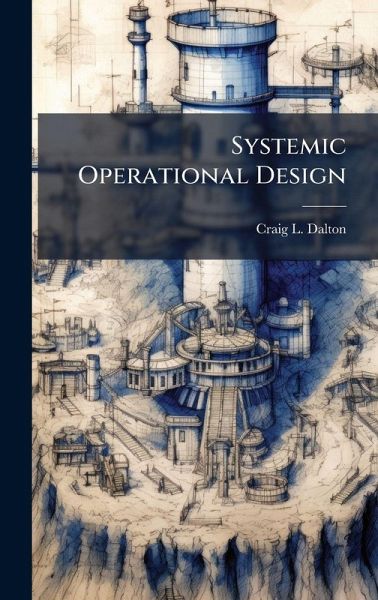
Systemic Operational Design
Versandkostenfrei!
Versandfertig in über 4 Wochen
28,99 €
inkl. MwSt.
Weitere Ausgaben:

PAYBACK Punkte
14 °P sammeln!
Operational design is an intellectual exercise that draws on the creative vision, experience, intuition, and judgment of commanders to provide a framework for development of detailed operation plans. Recently, a number of authors have questioned the continued relevance of the classic elements of operational design (CEOD) approach in the contemporary operating environment (COE) suggesting that we may be facing a â~crisis in operational design'. This monograph explores this potential crisis in operational design from a Canadian Forces (CF) perspective and examines the CF CEOD methodology with a...
Operational design is an intellectual exercise that draws on the creative vision, experience, intuition, and judgment of commanders to provide a framework for development of detailed operation plans. Recently, a number of authors have questioned the continued relevance of the classic elements of operational design (CEOD) approach in the contemporary operating environment (COE) suggesting that we may be facing a â~crisis in operational design'. This monograph explores this potential crisis in operational design from a Canadian Forces (CF) perspective and examines the CF CEOD methodology with a particular focus on theoretical underpinnings. Subsequently, this paper examines an Israeli Defense Force (IDF) operational design methodology, Systemic Operational Design (SOD), and compares it to the CF CEOD methodology to determine whether it might offer useful insights for practitioners of operational design in the COE. This monograph concludes that SOD is based on theoretical underpinnings that more accurately reflect the COE and a clearer and more functional conception of operational design. Finally, this monograph recommends that the CF explore SOD with a view to adopting an operational design methodology better suited to the COE. This work has been selected by scholars as being culturally important, and is part of the knowledge base of civilization as we know it. This work was reproduced from the original artifact, and remains as true to the original work as possible. Therefore, you will see the original copyright references, library stamps (as most of these works have been housed in our most important libraries around the world), and other notations in the work. This work is in the public domain in the United States of America, and possibly other nations. Within the United States, you may freely copy and distribute this work, as no entity (individual or corporate) has a copyright on the body of the work. As a reproduction of a historical artifact, this work may contain missing or blurred pages, poor pictures, errant marks, etc. Scholars believe, and we concur, that this work is important enough to be preserved, reproduced, and made generally available to the public. We appreciate your support of the preservation process, and thank you for being an important part of keeping this knowledge alive and relevant.












